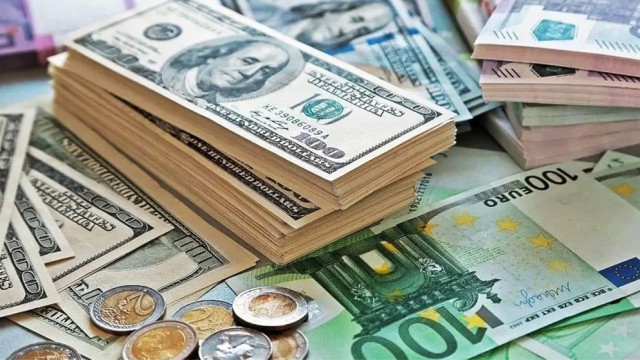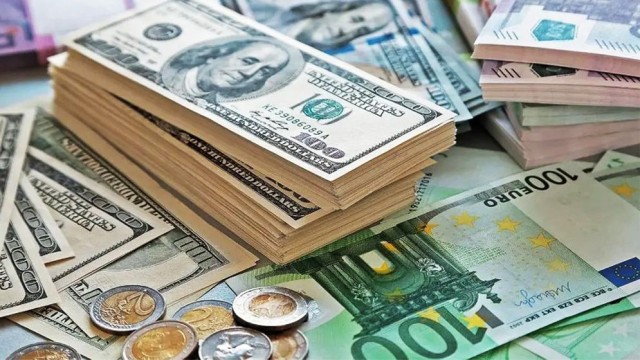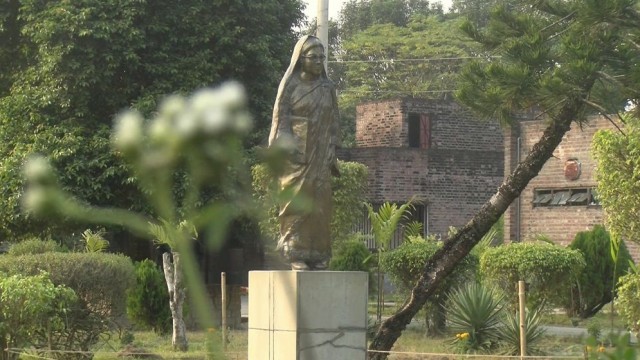Dhaka, Feb 19 (V7N)—When Dr Ahsan H Mansur took office as the 13th governor of Bangladesh Bank in August last year – the government had to amend the Bangladesh Bank Act to remove the age limit for the post to facilitate his appointment – the economy was in a fragile state.
The dollar crisis had intensified, foreign exchange reserves had plummeted and there was a rush to withdraw money from banks, leading to a severe liquidity crisis in the banking sector.
Commodity prices continued to rise and inflation remained uncontrollable.
After assuming office, Ahsan implemented several changes and measures to address the banking sector's liquidity crisis. He provided financial support to weak and troubled banks by printing new money. He also took various steps to manage the dollar crisis, foreign exchange reserves and loan discipline.
Under his leadership, the decline in reserves has been halted and stability has been maintained.
Moreover, Ahsan announced last year that Bangladesh had already repaid nearly $1.75 billion in foreign debt without dipping into its reserves.
Additionally, the government has paid over $1.25 billion in interest and project-related loans.
Overall, the central bank, under Ahsan’s leadership, is implementing measures to address the liquidity crisis, enhance transparency and accountability, and protect customer interests.
Restoring confidence in banking sector
Since taking office, he has undertaken several effective steps to restore confidence in the banking sector, resulting in positive changes.
Arif Hossain Khan, executive director of Bangladesh Bank, told this correspondent that Ahsan had brought significant improvements since assuming office.
He had initiated a market-based exchange rate, which had increased the supply of dollars and helped stabilize reserves, the central bank spokesperson said, adding that controlling high inflation had been the governor’s top priority.
"His initiatives have led to an increase in bank deposits, and public confidence in banks is rising. He has taken measures to improve governance, including restructuring the boards of 12 banks and reclaiming banks from politically influential groups," Arif said.
Increase in deposits
Due to a longstanding crisis of confidence and financial irregularities, many customers had been withdrawing their money from banks. However, recent data suggests a shift in this trend.
In December, approximately Tk1,085 crore was deposited back into banks, signalling a positive trend for the economy.
Moreover, the amount of cash circulating outside banks slightly decreased from Tk2,77,000 crore in November to Tk2,76,000 crore in December.
Good governance
Under Ahsan’s leadership, Bangladesh Bank has undertaken several initiatives to establish good governance in the banking sector.
Key measures include restructuring the boards of at least 12 banks and taking control of banks from politically connected individuals.
These steps have strengthened efforts to bring order back to the banking sector.
Controlling NPLs
The high rate of non-performing loans (NPLs) remains a serious concern for the banking sector, and Bangladesh Bank fears that up to 30% of total distributed loans could turn into NPLs.
To address this, the central bank plans to align its loan classification and recovery process with international standards.
Raising policy interest rates
To combat high inflation, the governor has gradually increased the policy interest rate (repo rate).
In September, the repo rate was raised from 9% to 9.5%. The next month, it was further increased by 50 basis points to 10%
The upper limit for the interbank lending rate, known as the Standing Lending Facility (SLF), was raised from 11% to 11.5%, while the lower limit, known as the Standing Deposit Facility (SDF), was raised from 8% to 8.5%
Focus on controlling inflation
Bangladesh Bank is prioritizing efforts to control inflation. To achieve this, the central bank aims to reduce pressure on the exchange rate while maintaining foreign reserves.
The government is also supporting these measures by lowering its borrowing target from the banking sector. Initially, the government's borrowing target for the current fiscal year was Tk1,37,000 crore, but it has now been reduced to Tk99,000 crore.
Bangladesh Bank aims to bring inflation down to 7-8% by June. To support this goal, a new monetary policy has been announced for the second half (January-June) of the 2024-25 fiscal year.
Ahsan said controlling inflation was currently the central bank’s top priority, even over GDP growth.
Discipline in banking sector
The governor has taken a firm stance against financial mismanagement and money laundering in the banking sector, pledging to track down and take action against those who have siphoned bank funds and transferred assets abroad.
To achieve this, foreign firms have been engaged to assess these assets.
Measures against money laundering
Since taking office, Ahsan has introduced various measures to curb money laundering and recover illicit funds. He has advocated for coordinated legal actions against offenders and plans to hire international lawyers for cases in foreign courts.
He has repeatedly stated that improved governance has significantly reduced money laundering, keeping more capital within the country.
The governor is also collaborating with international agencies to recover laundered funds and take stringent action against offenders.
Market-based exchange rate system
Under Ahsan’s leadership, Bangladesh Bank has taken steps to transition towards a market-driven exchange rate system.
Since assuming office, he has implemented policies to stabilize the exchange rate. At the time, the exchange rate for $1 was approximately Tk120, which has now slightly increased to around Tk122.
Additionally, increased remittance inflows have positively impacted foreign currency reserves, helping stabilize the exchange rate.
In January, Bangladesh received $2.18 billion in remittances, marking the sixth consecutive month where inflows exceeded $2 billion.
Overall, the policies implemented under Ahsan’s leadership have contributed to relative stability in the foreign exchange market.
New guidelines to regulate dollar market
Bangladesh Bank has also introduced new regulations to enhance discipline in the foreign exchange market.
Moving forward, all import payments and remittance or export-related dollar transactions must be conducted at a uniform exchange rate.
Besides, the difference between buying and selling rates cannot exceed Tk1.
Additionally, banks are required to digitally display exchange rates at their branches.
Strengthening reserves and stability
Since Ahsan took office, the decline in foreign reserves has stopped, bringing greater stability.
Currently, reserves stand at around $20 billion. The reserves, calculated under the BPM6 (Balance of Payments and International Investment Position Manual), are approximately $20.61 billion, while the gross reserves as of February 13 amounted to $25.87 billion.
Adjustments in the exchange rate have encouraged expatriates to send remittances through banking channels, boosting overall inflows.
To maintain reserve stability, Bangladesh Bank has also implemented measures to control import costs and boost export earnings. In the first six months of the 2024-25 fiscal year, remittance inflows increased by 26.7%, while export earnings rose by 11%.
International cooperation
Ahsan has taken on the role of chairperson of the Saarc Finance Network, an initiative that fosters cooperation among South Asian central banks.
His policies and initiatives aim to enhance financial stability and governance in the banking sector.
Controversies
Some of Ahsan’s policies have also sparked debate.
To control inflation, he has increased the policy interest rate. However, this move has raised business costs, prompting concerns from businesses who fear it may negatively impact investment and production.
Moreover, despite initially vowing not to print money for liquidity support, he later approved Tk22,500 crore in assistance to restore confidence in struggling banks. Critics argue that this move could exacerbate inflation and have long-term negative consequences for the economy.
END/MSS/AJ































Comment: